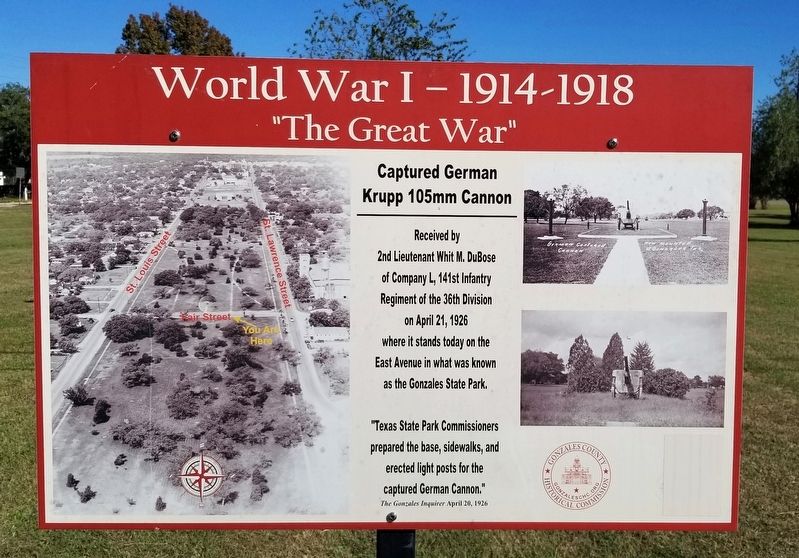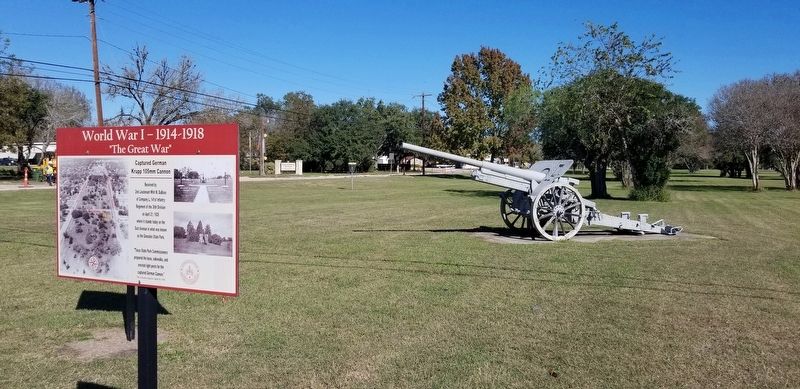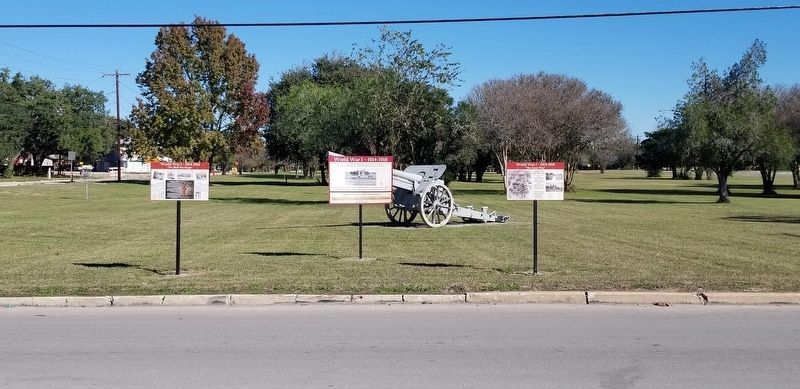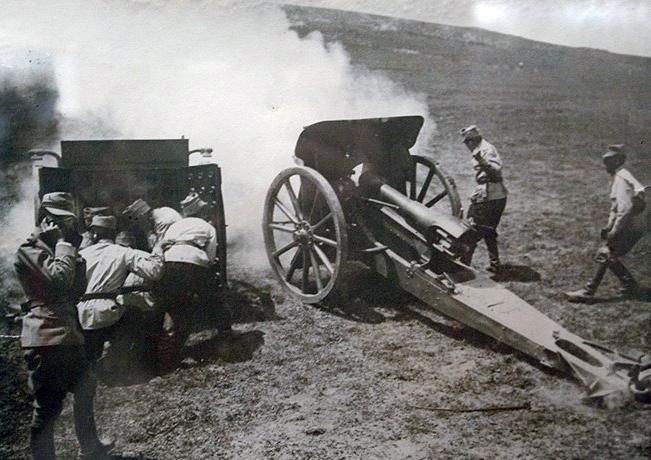Gonzales in Gonzales County, Texas — The American South (West South Central)
"The Great War"
World War I - 1914-1918
Krupp 105mm Cannon
Received by
2nd Lieutenant Whit M. DuBose
of Company L, 141st Infantry
Regiment of the 36th Division
on April 21, 1926
where it stands today on the
East Avenue in what was known
as the Gonzales State Park.
"Texas State Park Commissioners
prepared the base, sidewalks, and
erected light posts for the
captured German Cannon."
The Gonzales Inquirer April 20, 1926
Erected by Gonzales County Historical Commission.
Topics. This historical marker is listed in these topic lists: Parks & Recreational Areas • War, World I. A significant historical date for this entry is April 21, 1926.
Location. 29° 30.397′ N, 97° 26.177′ W. Marker is in Gonzales, Texas, in Gonzales County. Marker is at the intersection of North Fair Street and St. Lawrence Street, on the right when traveling north on North Fair Street. The marker and cannon are located in the western section of the Gonzales City Park. Touch for map. Marker is in this post office area: Gonzales TX 78629, United States of America. Touch for directions.
Other nearby markers. At least 8 other markers are within walking distance of this marker. Company L, First Texas Infantry (here, next to this marker); "We Shall Not Forget" (a few steps from this marker); 1825 Kerr's Settlement (approx. 0.3 miles away); Kerr's Settlement (approx. 0.3 miles away); The Eggleston House (approx. 0.4 miles away); Sarah Ponton Eggleston (approx. 0.4 miles away); Oak Forest Bridge (approx. 0.4 miles away); Texas Historic Bridge (approx. 0.4 miles away). Touch for a list and map of all markers in Gonzales.
Also see . . . 10.5 cm Feldhaubitze M.12.
The Obuzierul Krupp, caliber 105 mm, model 1912 was a Romanian upgrade of the German 10.5 cm Feldhaubitze 98/09 howitzer used extensively during World War I. After two years of planning and experimentation by Romanian officers, the final design was approved and the required modifications were performed at Arsenalul Armatei in Bucharest. The German aiming system was replaced with an improved Romanian system and the maximum range was increased to 6,500 meters, being superior to the 6,300 meters maximum range of its German counterpart. Maximum elevation was also increased from 40° to 60°. Thirty batteries (120 pieces) were converted by Arsenalul Armatei before and during World War I. They appear to have lingered in Romanian service into World War II. Guns captured by the Bulgarians appear to have been placed into service, although they seem to have been out of service by the outbreak of World War II. Source: Wikipedia(Submitted on December 6, 2021, by James Hulse of Medina, Texas.)
Credits. This page was last revised on December 6, 2021. It was originally submitted on December 5, 2021, by James Hulse of Medina, Texas. This page has been viewed 156 times since then and 22 times this year. Photos: 1, 2, 3, 4, 5. submitted on December 6, 2021, by James Hulse of Medina, Texas.




